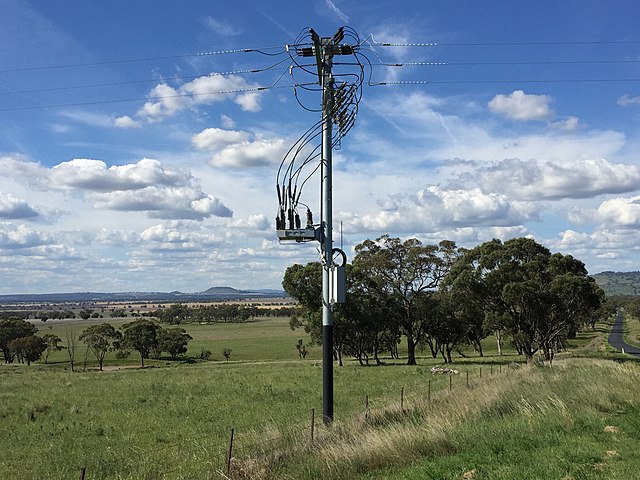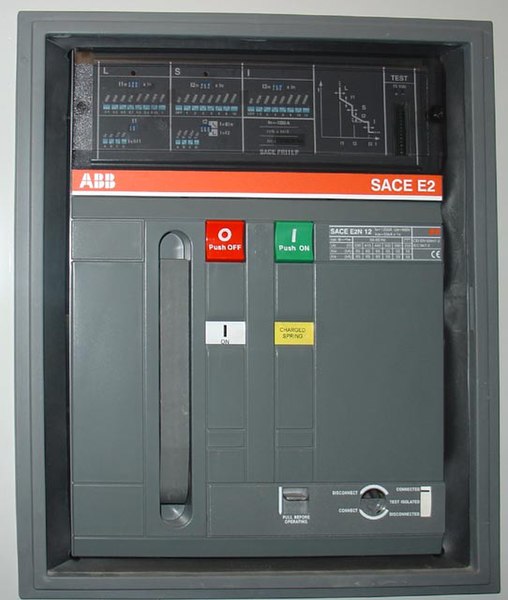In electric power distribution, automatic circuit reclosers (ACRs) are a class of switchgear designed for use on overhead electricity distribution networks to detect and interrupt transient faults. Also known as reclosers or autoreclosers, ACRs are essentially rated circuit breakers with integrated current and voltage sensors and a protection relay, optimized for use as a protection asset. Commercial ACRs are governed by the IEC 62271-111/IEEE Std C37.60 and IEC 62271-200 standards. The three major classes of operating maximum voltage are 15.5 kV, 27 kV and 38 kV.
Four reclosers on the right side of a substation
A Recloser installed on a Rural Feeder
A circuit breaker is an electrical safety device designed to protect an electrical circuit from damage caused by current in excess of that which the equipment can safely carry (overcurrent). Its basic function is to interrupt current flow to protect equipment and to prevent fire. Unlike a fuse, which operates once and then must be replaced, a circuit breaker can be reset to resume normal operation.
A two-pole miniature circuit breaker
An air circuit breaker for low-voltage (less than 1,000 volt) power distribution switchgear
Four one-pole miniature circuit breakers
Front panel of a 1250 A air circuit breaker manufactured by ABB. This low-voltage power circuit breaker can be withdrawn from its housing for servicing. Trip characteristics are configurable via DIP switches on the front panel.






